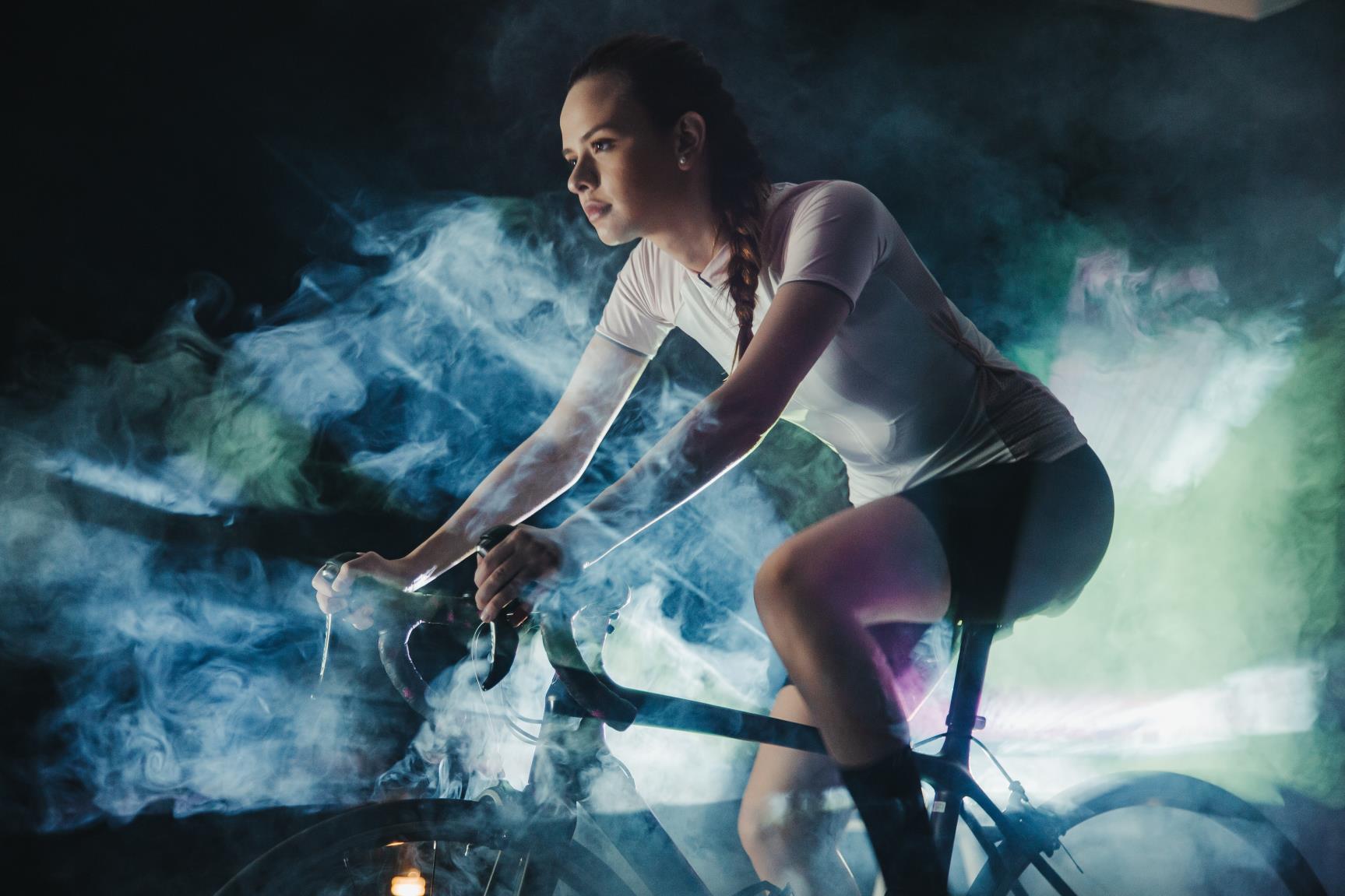A Beginner’s Guide to Bike Pedals : Best Pedals for Triathletes
 Karen Parnell
November 23, 2023
Karen Parnell
November 23, 2023
A Beginner’s Guide to Bike Pedals : Best Pedals for Triathletes
Biking—simply hop on and pedal away, right? Well, yes, but the world of cycling introduces a myriad of bike pedals, each offering a unique riding experience. In this overview, we examine the diverse types of pedals in today's market, providing insights and guidance on the advantages and drawbacks of each system. Whether you're a novice or an experienced cyclist, understanding these pedal options can significantly enhance your riding journey.
How do I choose bike pedals?
There are many different bike pedals available, and they are very personal to your riding level, preference, type of bike and race goals. There is no right or wrong and if you are not comfortable using clipless pedals, there are some great alternatives. If you do want to go clipless, then there is a lot of choice on the market.
There is a lot of pressure on new triathletes to go clipless but it’s not for everyone. Confidence, biomechanical issues, and past injuries inhibiting the “twist out” motion, can all be a factor. I for one have suffered many knee and ankle injuries over the years and twisting out can be painful with some traditional clipless pedals.
This guide details all the current options, but I’m sure more alternatives will come out over time and I will update this when I find new ones.
Platform Pedals
What are they best for? Commuting, recreational riding, entry level or downhill mountain biking and BMX.
Named for their shape, platform pedals create a large, flat surface area for your foot to rest on as you push. The most popular type of pedal, chances are you first learned to ride a bike on these bulky, rubbery planks. Platform pedals conform to any type of footwear (or lack thereof), and their simplicity and absence of a clipping system make them perfect for beginner cyclists.
Various designs of platform pedals exist, including ones for off-road use that have tiny “teeth” on or surrounding the pedal to help keep your foot in place as you traverse bumpy terrain. If you are a commuter, or just looking to ride your beach cruiser around town, platform pedals are the best option because you don’t have to stash an extra pair of shoes to wear once you reach your destination. Just get on and ride!
Pros:
- Can be used with any type of footwear
- You’re not “clipped in” as with clipless pedals, so you avoid the dreaded tip-over sometimes experienced with those systems
- Easy to put your foot down and stop, especially when you’re learning how to mountain bike
- Relatively inexpensive and don’t require any specific cycling shoes or cleats
- Beginner-friendly
Cons:
- Because you just rest your foot on top, you lose the full power of the pedal stroke (namely the upstroke), which can slow you down.
- With no ability to attach your foot to the pedal, mountain bikers will find that this makes it easy for your foot to fly off or the pedal to smack you in the shin.

Basic Flat Pedal
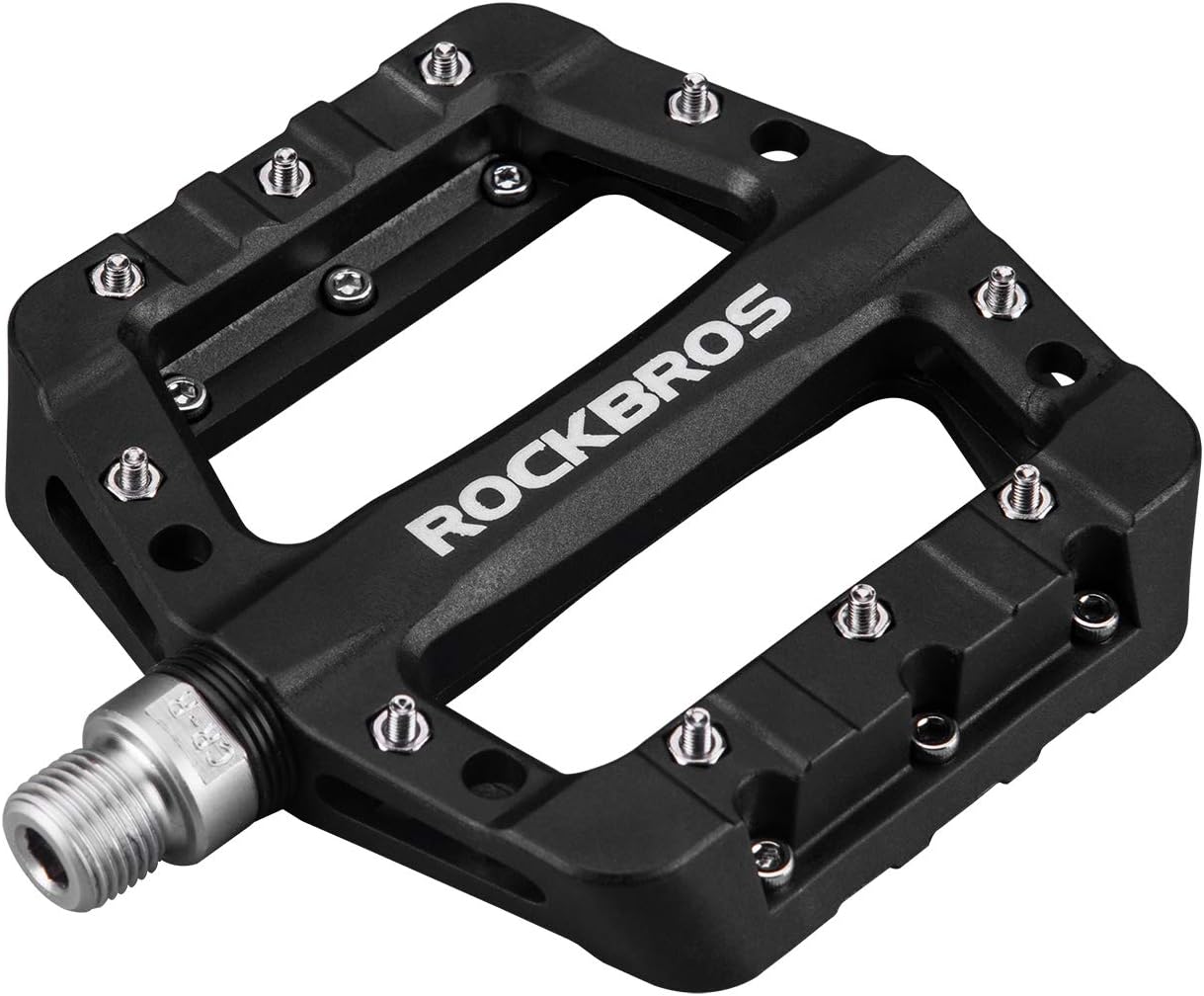
Mountain Bike Aluminium Pedals
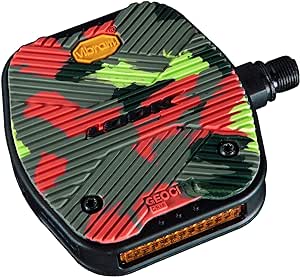
LOOK Geo City Grip Pedals
Get your FREE 31 structured workouts for Zwift Rouvy, or TrainerRoad
Toe Clips / Cage Pedals
What are they best for? serious commuters, recreational riders, entry-level mountain bikers
Toe clips, which you’ve probably used at your local spin class, are cages attached to the tops of platform pedals that hold your foot in place on top of the pedal. Like platform pedals, toe clips are very beginner-friendly and don’t require the purchase of special footwear or cleats. Unlike platform pedals, toe clips secure your foot in place, which is useful if you’re traveling long distances to and from work and would like more power in your pedal stroke.
Toe clips are also a good choice for novice mountain bikers who want a quick escape to place their foot on the ground should they encounter uncertain terrain. Toe clips will also prevent mountain bikers’ feet from slipping off pedals and crashing into their shins.
Pros:
- Can be used with any type of footwear (as long as the shoe fits in the cage)
- Beginner-friendly
- While you’re not clipped in, your foot is more secure on the pedal than with platform pedals.
- Relatively inexpensive
Cons:
- Even though your foot is inside the cage, you still don’t get the full power of the pedal stroke as you would if you were clipped in.
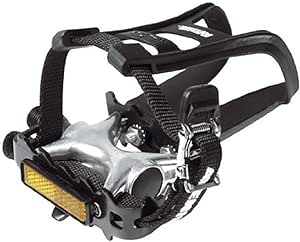
Plastic Toe Clips with Strap
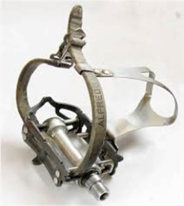
Retro Metal Toe Clip with Strap
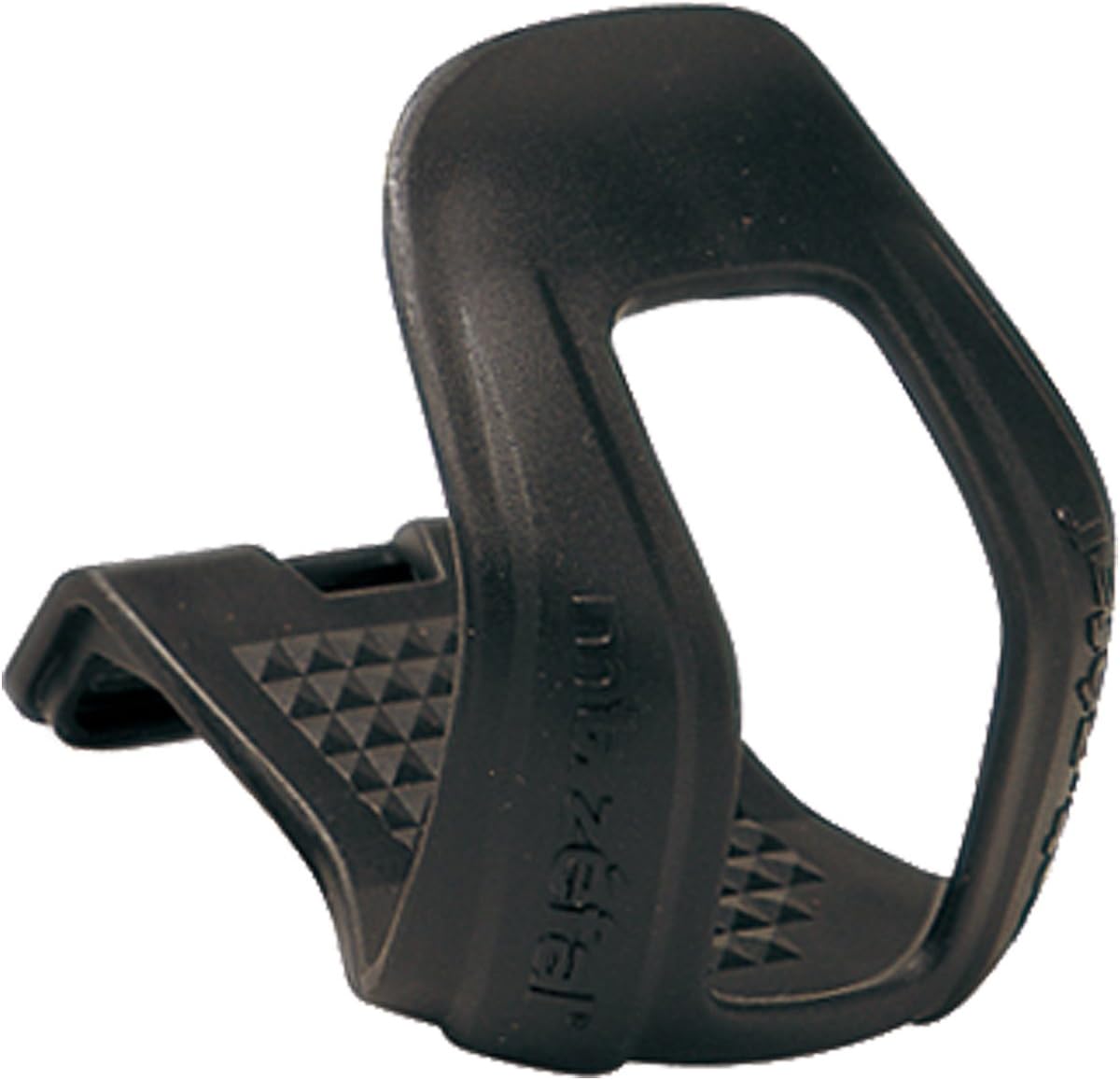
Plastic Toe Clip without Strap or Half Toe Clips
Get your FREE 31 structured workouts for Zwift Rouvy, or TrainerRoad
Hybrid Pedals
What are they best for? serious commuters, touring bikes, clipless pedal novices
With a platform pedal on one side and a clipless pedal system on the other, hybrid pedals offer riders a choice of how they want to roll. One of the more popular versions of this pedal is the Shimano-PDM324, which retails for around €50/£50 and offers an SPD clipless system on one side and a platform pedal with gripping aluminium teeth on the other.
Commuters who like the option of clipping in some days and wearing regular work shoes on others, or people doing long touring rides who want the flexibility of clipping in or not, do particularly well with this type of setup. If you’re a roadie or mountain bike novice who wants to venture into the world of clipless pedals but would like the option to stay “unlocked” in certain situations, hybrid pedals offer the best of both worlds.
Pros:
- Flexibility to decide how you want to pedal based on your footwear, the terrain or your experience level
- Relatively inexpensive (although you’ll have to purchase cycling shoes and an SPD cleat system if you want to use the clipless side)
- Great option for people looking to make the transition from toe cages or platform pedals to clipless.
Cons:
- Can be a bit bulky and heavy compared to other pedal systems.
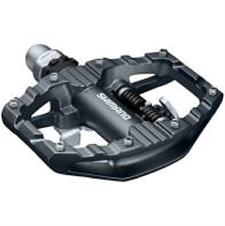
Hybrid Pedal – flat one side, SPD other

Look Geo Trekking Grip SPD
Get your FREE 31 structured workouts for Zwift Rouvy, or TrainerRoad
Clipless Pedal Systems
What are they best for? experienced roadies, mountain bikers and triathletes
“Clipless” pedal systems, somewhat of a misnomer, are named because of the lack of toeclips or cages in the design. Instead, the bottom of the rider’s foot is attached to the pedal through the use of special cycling shoes and cleats attached to the bottom of the shoe.
When attached to the pedal, a rider is commonly referred to as being “clipped in.” In this case, the rider can maximize the power generated by a full 360-degree pedal stroke. While clipping in and out is a simple matter of twisting one’s foot out slightly to the side to unclip, there is a learning curve with clipless pedals. Most people new to clipless pedals simply forget they are clipped-in, roll up to a traffic light or come to an abrupt stop on the trail, then topple over. Once you do this once or twice, you’ll never forget to clip out again!
Within the category of clipless pedals, you’ll find a range of styles, but the broader category of clipless pedal systems are broken down into two groups: road systems and off-road systems.
Pros:
- Most efficient pedal stroke, which saves your energy over a longer distance and allows you to travel faster
- By being clipped in, you can more decisively transfer your weight as needed during turns and on technical terrain.
Cons:
- More expensive due to the need to purchase specific shoes and cleats. The cleats will also need to be replaced every so often because of wear and tear.
- A bit of a learning curve and patience required to get comfortable being clipped in
Road Clipless Systems
For the serious roadie, if you own and frequently use a time trial bike, you might consider the road clipless system. Depending on the pedal manufacturer and pedal design, cleats for these pedals are fastened to the bottom of the shoe by a specific configuration of bolts. Road-specific cycling shoes tend to be very stiff to create more efficient power transfer and can range in price from €75/£75 to several hundred, depending on materials and specific design components. Due to the bulky attachment of the cleat to the bottom of the sole, it is often difficult to walk around in road shoes and should be kept to a minimum to risk slipping and falling.
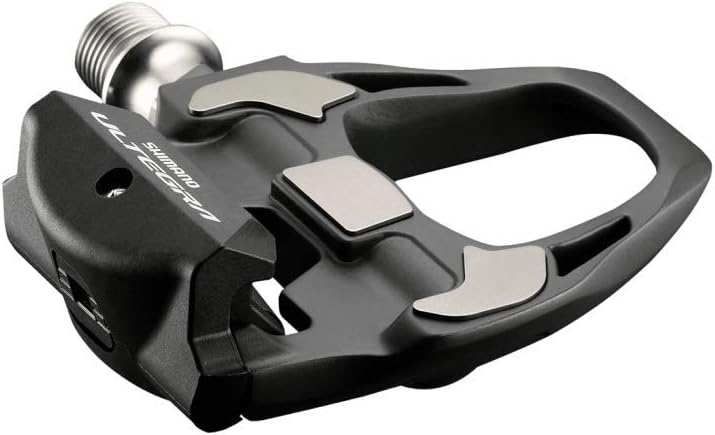
Shimano PD-R8000 Pedal
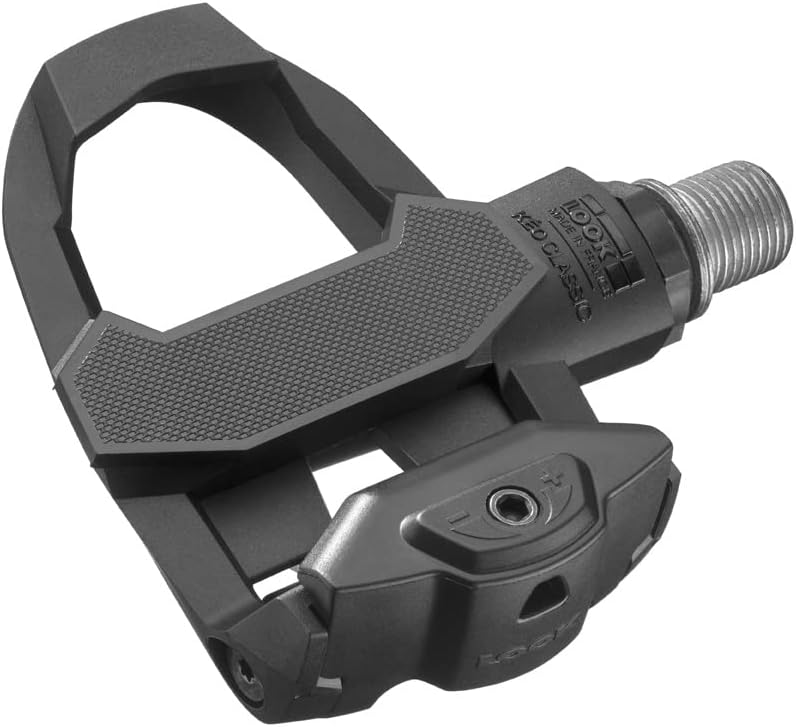
LOOK Keo Classic Pedal
Wahoo Speedplay
Wahoo Speedplay Pedals have a few important differences from most clipless road pedals: they are dual sided; the retention mechanism is in the cleat instead of the pedal; and the cleats attach with four bolts instead of the usual three-bolt road pattern. These may be better if you have ankle or knee issues but still want to go clipless. They are a little pricey though.
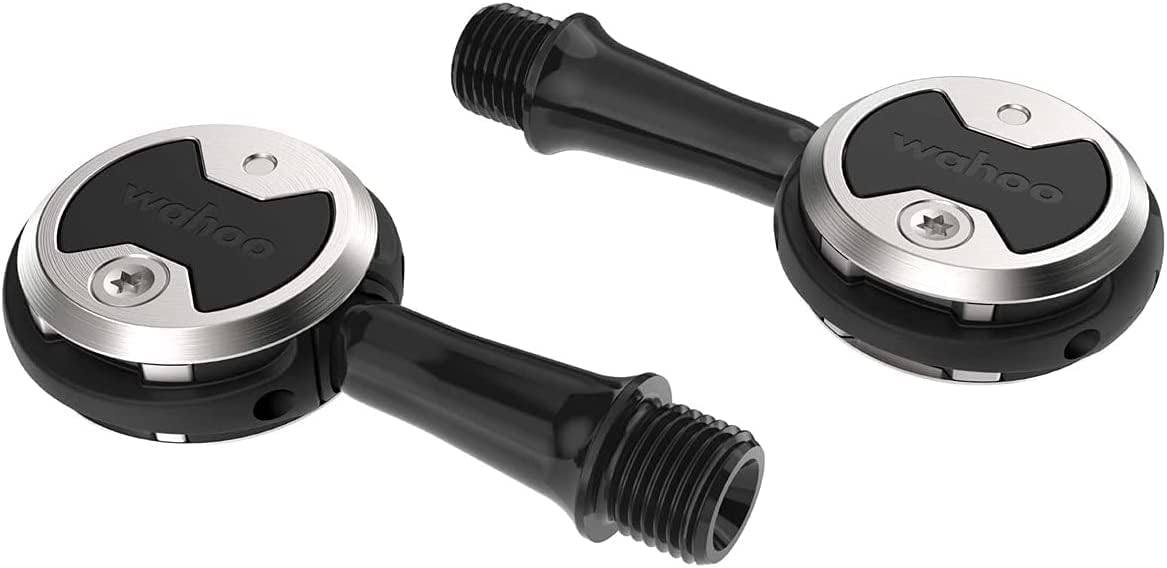
Wahoo Speedplay Pedals
Get your FREE 31 structured workouts for Zwift
Off-Road Clipless Systems
Off-road systems are similar to road systems, except the design of the cleat and shoe lends itself to off-road riding. Off-road shoe systems use a two-bolt system (often referred to as an SPD system), to attach the cleat to the bottom of the shoe. Designed with a recessed cleat attachment and treaded soles, off-road shoes make it easier to walk around off the bike and keep mud and dirt from clogging up the cleat. There is also a variety of mountain bike cycling shoe styles. From sandal designs and lace-up models that look like trail boots to stiffer designs that closely resemble road cycling shoes, riders can find the right type to match their riding style and personality. Theoretically, you could use a clipless off-road system on the road and vice versa. And much like road cycling shoes, the prices vary from less than €100/£100 to several hundred, and the cleats will need regular replacement.
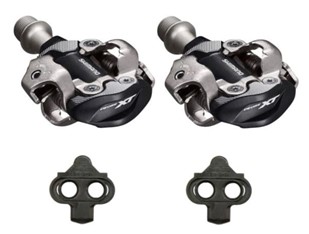
Shimano SPD Pedals & Cleats
Bythlon Bike Pedals
Bythlon is the innovation in clipless pedal technology. Simply step in and step out of your pedals, without being fixed to your bike. A form-fitting connection keeps the cleat plate engaged with the pedal. Bythlon empowers cyclists to ride better, smarter, and safer, whilst building confidence in the saddle.
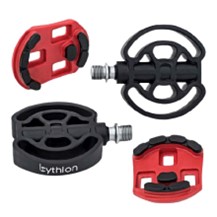
Bythlon Pedals – easy clip in and out
These are great if you are nervous about clipping in or have knee of ankle problems and find it difficult to up clip. They are lightweight but give you the benefits of a pseudo clip in.
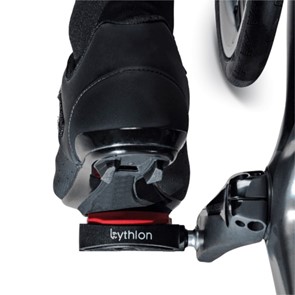
Bythlon Pedals are simple but effective
Magped Magnetic Pedals
The Magped safety bike pedals are a magnet-based pedal for road, mountain bikes and e-bikes. The magnet is in the pedal and a metal plate fits to your shoe. The magnet mechanism makes quick and simple release of the foot from the pedal possible at any time. In comparison to standard click-in pedals, the risk of crash and injury will be reduced to a minimum – and your head stays free for a hassle-free biking experience without fear.
With the Magped pedal you are connected to the bike with a magnet, like clipless pedals, but you also enjoy the freedom of a flat/platform pedal. Because you are not locked in, Magped’s offer you the safety of flat platform pedal and the performance of clipless pedal.
Magped’s magnets are the strongest in a north/south (straight up/down) direction on the pedals. When you start to move east/west (sideways) the force of the magped magnets decreases resulting in an easy release of your foot from the pedal. You will get used to being able to quickly release your foot with a simple movement of your foot to the side. You will almost not feel any resistance at all. Knowing that you are not “locked in” will give you confidence and a much more relaxed feeling when you ride.
You can read more about Magped here.
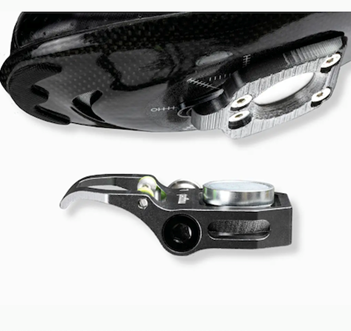
Magped pedals use magnets to secure your cycling shoe in the pedal
For the magped SPORT, SPORT2, ENDURO and ULTRA you should use a 2 hole SPD shoe with flat brine like those listed below:
- All Five Ten SPD Models
- Shimano AM 5, AM 7, 501, 701
- Shimano SH-AM702 Gravity SPD
- Specialized 2 FO
- Scott AR, Scott Cruz
- SCOTT MTB AR Boa Clip Schuh
- O’Neal Flow SPD
- Cube ATX Lynx
- Giro Chamber Rimble
- Vaude TVL Pavei
For the magped ROAD you need a 3-hole road bike shoe.
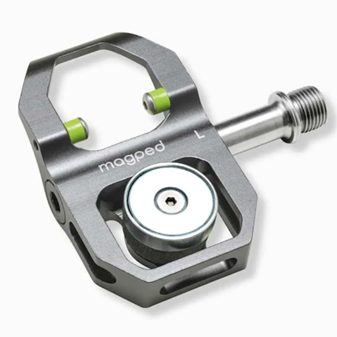
Magped Pedal
Get your FREE 31 structured workouts for Zwift Rouvy, or TrainerRoad
Conclusion: Best Pedals for Triathletes
Choosing the right bike pedals is a crucial decision for cyclists and triathletes of all levels, especially beginners. The variety of options available, including platform pedals, toe clips/cage pedals, hybrid pedals, clipless pedal systems, and specialized pedals like those designed for ease of use (Bythlon and Magped Bike Pedals), can be overwhelming. The key is to consider your individual preferences, riding style, and intended use.
Platform pedals offer simplicity and versatility, making them ideal for casual riders and those who frequently stop and start. Toe clips/cage pedals provide a middle ground, offering more foot security without the commitment of clipless systems. Hybrid pedals combine features of both, allowing riders to choose between a platform and a clip-in option.
For those looking to maximize efficiency and power transfer, clipless pedal systems are worth exploring. Despite a steeper learning curve, the benefits of increased pedalling efficiency and control can greatly enhance your cycling experience. Additionally, specialized pedals like Bythlon and Magped Bike Pedals cater to the unique needs of those who need ease of use, emphasizing confident clipping in and out.
Ultimately, the best choice comes down to personal preference, comfort, and the type of riding you plan to do. Experiment with different pedal types to discover which one aligns best with your cycling goals. As you gain experience and confidence, you may find that your pedal preferences evolve. Happy cycling!
Karen Parnell is a Level 3 British Triathlon and IRONMAN Certified Coach, 8020 Endurance Certified Coach, WOWSA Level 3 open water swimming coach and NASM Personal Trainer and Sports Technology Writer.
Karen has recently completed a postgraduate MSc in Sports Performance Coaching at the University of Stirling.
Need a training plan? I have plans on TrainingPeaks and FinalSurge:
I also coach a very small number of athletes one to one for all triathlon and multi-sport distances, open water swimming events and running races, email me for details and availability. Karen.parnell@chilitri.com
Get your FREE Guide to Running Speed and Technique
Get your FREE Swim Workouts for Triathletes E-book
Get your FREE Open Water Swimming Sessions E-Book
Get your FREE 31 structured workouts for Zwift Rouvy, or TrainerRoad
FAQ: How to Choose Cycling and Triathlon Pedals
What are the different types of bike pedals available for beginners?
Beginners have several options, including platform pedals, toe clips / cage pedals, hybrid pedals, clipless pedal systems, and specialized pedals like Bythlon and Magped Bike Pedals.
What are platform pedals and who are they suitable for?
Platform pedals have a flat surface and are suitable for casual riders or those who frequently stop and start. They provide simplicity and versatility, allowing riders to use any type of footwear.
What are toe clips / cage pedals, and how do they differ from platform pedals?
Toe clips/cage pedals have an additional cage that surrounds the front of the foot, providing more security and efficiency than platform pedals. They offer a middle ground between the simplicity of platform pedals and the firm connection of clipless systems.
What are hybrid pedals, and what advantages do they offer?
Hybrid pedals combine features of both platform and clipless pedals, providing riders with the option to use a flat surface or clip in with cycling shoes. They are versatile and suitable for riders who want flexibility in their pedal choice. One side is flat and the other side you can clip in so you can choose to wear standard shoes or cycling shoes depending on the situation you are riding in.
What are clipless pedal systems, and why might they be beneficial for beginners?
Clipless pedal systems require special cycling shoes with cleats that attach to the pedals. Despite the initial learning curve, they offer increased pedaling efficiency, power transfer, and control, making them beneficial for riders looking to enhance their cycling experience.
What are Bythlon Bike Pedals, and who might benefit from using them?
Bythlon Bike Pedals are specialized pedals designed for easy clip in and out. They prioritize quick transitions with confidence. Ideal for new triathletes.
How does the Bythlon system work? Is it magnetic?
No. There are no magnetics, no clips, no locks. We use a form fitting connection to keep the cleat plate engaged with the pedal. The cleat plate has protruding arc-shaped cleats that fit into the pedal body’s matching recesses. The arc shape helps you by guiding the cleat into position when stepping in. Once stepped in, the cleats are engaged with the pedal and secure you in the horizontal pane. You can’t slip off the pedal.. Most importantly, the Bythlon system never locks you in vertically, so you can step out at any time. Bythlon combines the performance aspect of using cycle shoes with the safety of a flat pedal, you will never get stuck.
What tools do I need to mount the cleats and pedals?
You will need a 3mm and 6mm Allen key, also known as hex keys. If you want to replace existing pedals or cleats, you may need additional tools like a 15 mm wrench or different size Allen key.
How do I choose the right pedals for me as a beginner?
Consider your riding style, preferences, and intended use. If you value simplicity and versatility, platform pedals might be suitable. If you want a more secure connection, toe clips/cage pedals or hybrid pedals could be a good fit. For maximum efficiency and control, explore clipless pedal systems. Triathletes may find Bythlon Bike Pedals catered to their specific needs if new to triathlon.
Can I use regular shoes with clipless pedal systems?
No, clipless pedal systems require cycling shoes with compatible cleats. These shoes have a rigid sole that efficiently transfers power to the pedals, enhancing your cycling performance.
How can I get used to using clipless pedals as a beginner?
Practice in a safe, open area, and start by getting used to clipping in and out while stationary. Gradually progress to short rides, focusing on smooth and controlled pedal engagement and disengagement. It takes time to build confidence, so be patient and persistent.
Can I switch pedal types as I gain more experience?
Absolutely. As you become more comfortable and experienced, your preferences may change. Many cyclists start with one type of pedal and transition to another as they refine their riding style and goals. Experimenting with different pedal types is a natural part of the learning process.
Bike Pedal Glossary of Terms
Cleats: Small, usually metal, attachments on the bottom of cycling shoes that clip into clipless pedal systems for a secure connection.
Clip-In: The action of attaching cycling shoes to clipless pedals using cleats, providing a secure and efficient connection between the foot and pedal.
Clipless Pedal Systems: Pedal systems that require special cycling shoes with cleats, offering a secure and efficient connection between the foot and pedal, despite the misleading name (they do involve clipping in).
Crank Arms: The horizontal arms that connect the pedals to the bike's bottom bracket, where the pedal force is applied.
Float: The degree of movement or rotation allowed by a clipless pedal system before releasing the cleat, providing some flexibility for natural foot movement.
Hybrid Pedals: Pedals that combine features of platform pedals and clipless systems, allowing riders to use a flat surface or clip in with cycling shoes.
Platform Pedals: Flat pedals with a large surface area, suitable for various footwear, providing a simple and versatile option.
Power Transfer: The efficiency with which pedalling force is transmitted from the cyclist's leg to the pedal and ultimately to the bike.
Q-Factor: The lateral distance between the pedal attachment points on the crank arms, influencing the alignment of the cyclist's legs and feet during pedalling.
Release Tension: The adjustable tightness of a clipless pedal system, determining the force required to release the foot from the pedal.
Spindle: The axle of the pedal that rotates within the pedal body, connecting the pedal to the crank arm.
Toe Clips/Cage Pedals: Pedals equipped with toe clips or cages to secure the foot in place, offering a balance between the simplicity of platform pedals and the firm connection of clipless systems.
Transition: In the context of triathlons, the change from cycling to running, or vice versa, where quick and efficient pedal systems can be advantageous.
References
I wrote the original version of this article for TRI247 in November 2022.
Get your FREE 31 structured workouts for Zwift Rouvy, or TrainerRoad
his website uses affiliate links which may earn a commission at no additional cost to you. As an Amazon Associate I earn from qualifying purchases.
